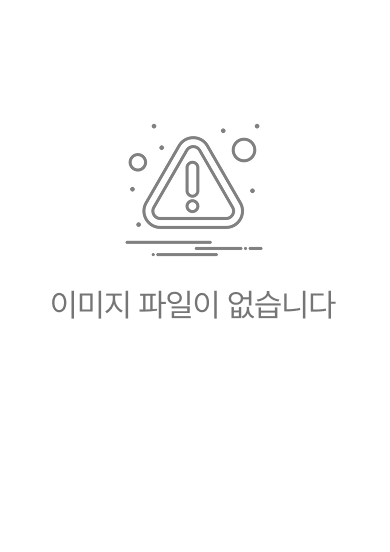

PARTNER
검증된 파트너 제휴사 자료
시간활동양상 및 이산화탄소 농도를 이용한 한국 주택 환기량 추정 (Estimation of Ventilation Rates in Korean Homes Using Time-activity Patterns and Carbon Dioxide (CO2) Concentration)
8 페이지
최초등록일 2025.04.18
최종저작일
2019.02

-
미리보기
서지정보
· 발행기관 : 한국환경보건학회
· 수록지 정보 : 한국환경보건학회지 / 45권 / 1호 / 1 ~ 8페이지
· 저자명 : 박진현, 류현수, 허정, 조만수, 양원호
초록
Objectives: The purpose of this study was to estimate the ventilation rate of residential homes in Korea through tracer gas methods using indoor and outdoor concentrations of carbon dioxide (CO 2 ) and CO 2 generation rates from breathing.
Methods: In this study, we calculated the number of occupants in a home by time through data on the average number of people per household from the Korean National Statistical Office and also measured the amount of CO 2 generation by breathing to estimate the indoor CO 2 generation rate. To estimate the ventilation rate, several factors such as the CO 2 generation rate and average volume of residential house provided by the Korean National Statistical Office, indoor CO 2 concentrations measured by sensors, and outdoor CO 2 concentrations provided by the Korea Meteorological Administration, were applied to a mass balance model for residential indoor environments.
Results: The average number of people were 2.53 per household and Koreans spend 61.0% of their day at home. The CO 2 generation rate from breathing was 13.9±5.3 L/h during sleep and 15.1±5.7 L/h in a sedentary state. Indoor and outdoor CO 2 concentrations were 849 ppm and 407 ppm, respectively. The ventilation rate in Korean residential houses calculated by the mass balance model were 42.1 m 3 /h and 0.71 air change per hour.
Conclusions: The estimated ventilation rate tended to increase with an increase in the number of occupants. Since sensor devices were used to collect data, sustainable data could be collected to estimate the ventilation rate of Korean residential homes, which enables further studies such as on changes in the ventilation rate by season resulting from the activities of occupants. The results of this study could be used as a basis for exposure and risk assessment modeling.영어초록
Objectives: The purpose of this study was to estimate the ventilation rate of residential homes in Korea through tracer gas methods using indoor and outdoor concentrations of carbon dioxide (CO 2 ) and CO 2 generation rates from breathing.
Methods: In this study, we calculated the number of occupants in a home by time through data on the average number of people per household from the Korean National Statistical Office and also measured the amount of CO 2 generation by breathing to estimate the indoor CO 2 generation rate. To estimate the ventilation rate, several factors such as the CO 2 generation rate and average volume of residential house provided by the Korean National Statistical Office, indoor CO 2 concentrations measured by sensors, and outdoor CO 2 concentrations provided by the Korea Meteorological Administration, were applied to a mass balance model for residential indoor environments.
Results: The average number of people were 2.53 per household and Koreans spend 61.0% of their day at home. The CO 2 generation rate from breathing was 13.9±5.3 L/h during sleep and 15.1±5.7 L/h in a sedentary state. Indoor and outdoor CO 2 concentrations were 849 ppm and 407 ppm, respectively. The ventilation rate in Korean residential houses calculated by the mass balance model were 42.1 m 3 /h and 0.71 air change per hour.
Conclusions: The estimated ventilation rate tended to increase with an increase in the number of occupants. Since sensor devices were used to collect data, sustainable data could be collected to estimate the ventilation rate of Korean residential homes, which enables further studies such as on changes in the ventilation rate by season resulting from the activities of occupants. The results of this study could be used as a basis for exposure and risk assessment modeling.참고자료
· 없음태그
-
자주묻는질문의 답변을 확인해 주세요

꼭 알아주세요
-
자료의 정보 및 내용의 진실성에 대하여 해피캠퍼스는 보증하지 않으며, 해당 정보 및 게시물 저작권과 기타 법적 책임은 자료 등록자에게 있습니다.
자료 및 게시물 내용의 불법적 이용, 무단 전재∙배포는 금지되어 있습니다.
저작권침해, 명예훼손 등 분쟁 요소 발견 시 고객센터의 저작권침해 신고센터를 이용해 주시기 바랍니다. -
해피캠퍼스는 구매자와 판매자 모두가 만족하는 서비스가 되도록 노력하고 있으며, 아래의 4가지 자료환불 조건을 꼭 확인해주시기 바랍니다.
파일오류 중복자료 저작권 없음 설명과 실제 내용 불일치 파일의 다운로드가 제대로 되지 않거나 파일형식에 맞는 프로그램으로 정상 작동하지 않는 경우 다른 자료와 70% 이상 내용이 일치하는 경우 (중복임을 확인할 수 있는 근거 필요함) 인터넷의 다른 사이트, 연구기관, 학교, 서적 등의 자료를 도용한 경우 자료의 설명과 실제 자료의 내용이 일치하지 않는 경우
“한국환경보건학회지”의 다른 논문도 확인해 보세요!
-
어린이의 요 중 비스페놀 A 농도에 근거한 위해성 평가와 알레르기 질환과의 관련성 12 페이지
Objectives: The purpose of this study was to examine the relationship between urinary bisphenol A concentration and allergic diseases in children. Methods: This study was conducted in Seoul, South Kor.. -
황산카드뮴독성의 산화적 손상에 대한 부들 추출물의 항산화 효과 9 페이지
Objectives: This study was carried out to analyze the cytotoxicity of cadmium sulfate (CdSO 4 ) and the antioxidative effect of Typha orientalis L. (TO) extract on the oxidative stress induced by cyto..
문서 초안을 생성해주는 EasyAI
